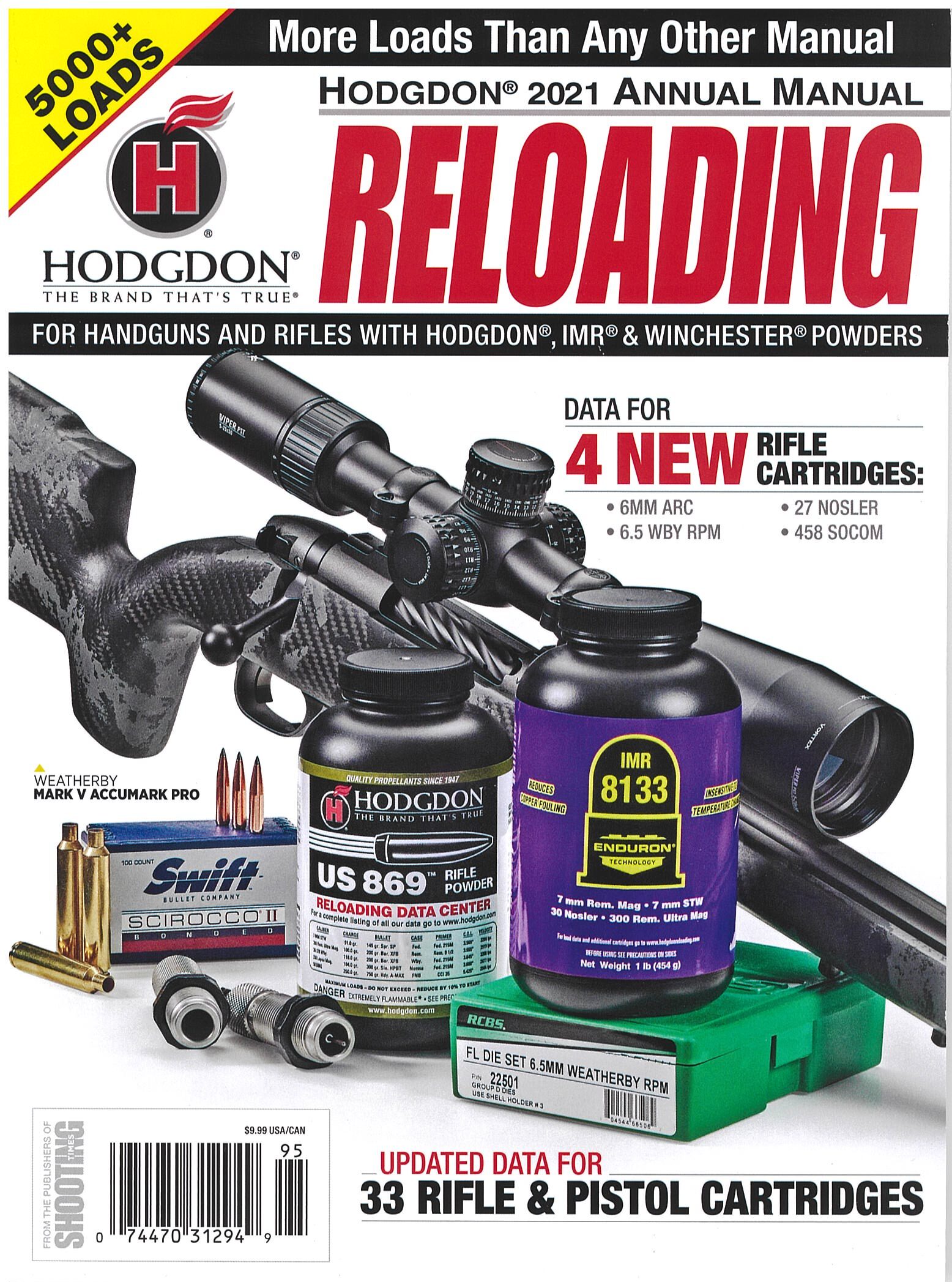Not All Reloading Manuals Are Created Equal
[author] [author_image timthumb=’on’]https://www.biggame.org/wp-content/uploads/2021/03/P1010082_077.jpg[/author_image] [author_info]Terry Blauwkamp is a seasoned hunter, gun-expert and reloader. He has been to Africa more than 20 times. Terry has been a consistent part of DSC Publications through his reloading column.[/author_info] [/author]
As the title says, Not All Reloading Manuals Are Created Equal. If you don’t agree, look up your favorite load in as many of them as you can find, and you will see quite a disparity from one to another.
Almost every bullet manufacturer has published multiple manuals over the years; and every 3-4 years, they publish a new one, as they have several new and improved bullets that they want you to buy, and you will need data to load them.
There are several reasons that the data provided can be different in each book, mostly because of many variations in what rifles they were tested in.
Let’s take a common .30-06 Springfield load of the 180-grain bullet with an old reliable 48 grains of IMR 4064 powder. One book will show 2,600 fps, another will show 2,688, and yet another 2,708, etc.
Why the big difference? The reasons are many, and when you compound them, things really get interesting. Let’s take the slowest one first, as it may very well have been tested in a 22” standard production rifle with Winchester cases and Winchester standard primers.
The next one could have been tested in a 22” barrel from a different rifle manufacturer with Remington cases and Remington primers.
The fastest of them could very well have been in a 24” high-quality custom-barreled rifle, or even in a special pressure testing gun with ultra-tight tolerances. It could also have been loaded in Federal brass and Federal primers.
Any of the above tests could also have been loaded with CCI primers, and that might or might not change velocity and pressures.
Now start mixing brands of the cases and primers along with many different styles and types of bullets, and anything between 2,600 fps and 2,700 fps is within reason.
Then there might even be a rifle that has been re-barreled with a 25” barrel. I did such a thing once upon a time and never regretted it, as that barrel provided .300 H&H velocities.

If you really want to confuse things, think of the loads that are made with standard, what we call cup-and-lead-core bullets, or bonded-core bullets, or even monolithic all-copper bullets. Each one of these has a totally different bearing surface and coefficient of friction, so each one will produce different results.
Then let’s toss in the possible variation of different lot numbers of the same powder, and again there will be variations of velocity.
I have no problem, and would likely suggest you acquire ALL of the different manuals out there so that when you are loading a certain manufacturer’s bullets, you can use their data. The Nosler book is not going to give you data for Swift Bullets, let alone which one, Scirocco or A-Frame. Same when loading Nosler bullets, and all you have is a Swift book.
It is updated every year, and uses several manufacturers’ bullets in many calibers. But it only gives you data for powders Hodgdon markets, so if you want data for Alliant Reloader powders, you’ll need to get Alliant data.
On the most positive side, the Hodgdon Manual gives you data for their own Hodgdon powders, along with IMR and Winchester powders, as they market all of them.
I have found the Hodgdon powders to have great lot-to-lot consistency.
You can also go to www.Hodgdon.com for online data. You can purchase the manual directly from them, or many other reloading supply sources sell it too.
Feel free to write me at TBlauwkamp@superior-sales.com if I can be of any help.



